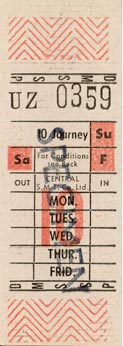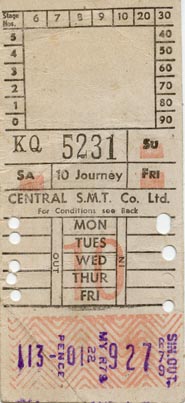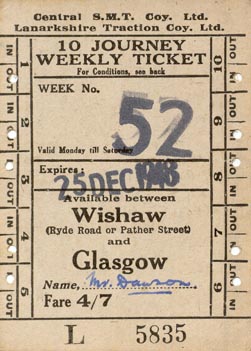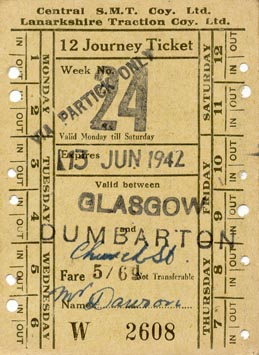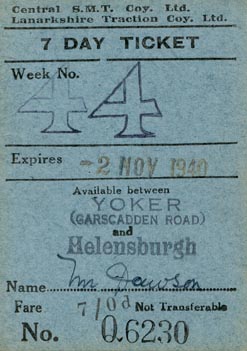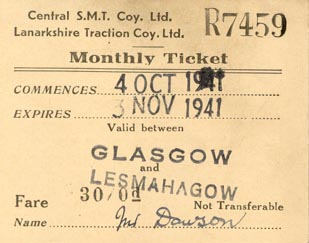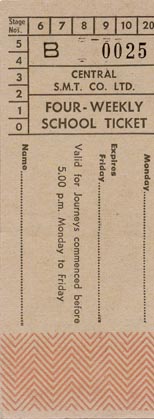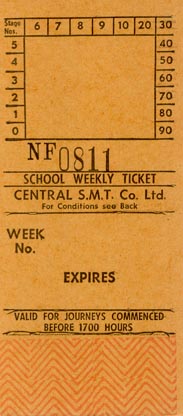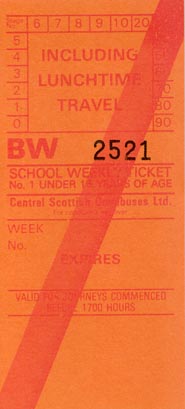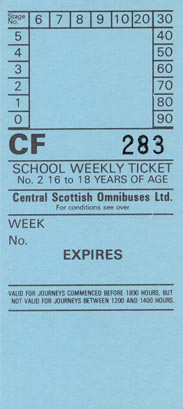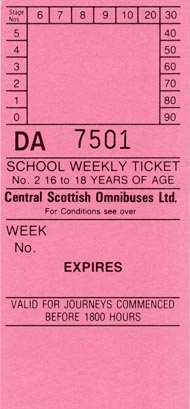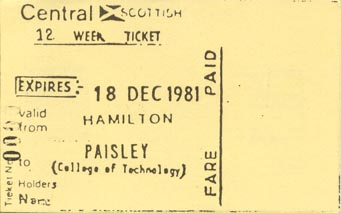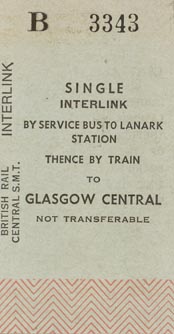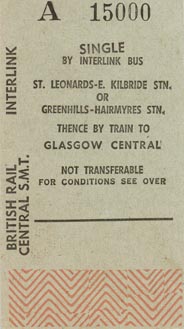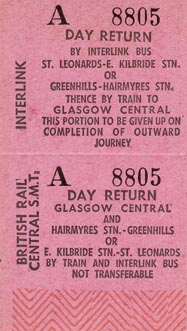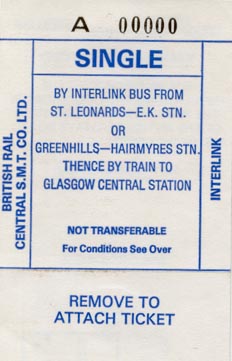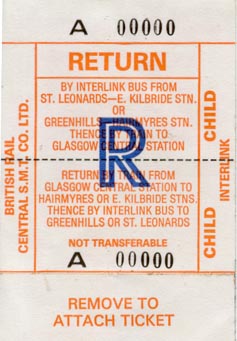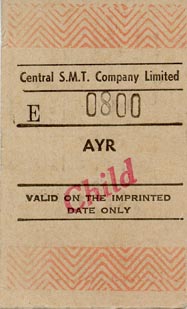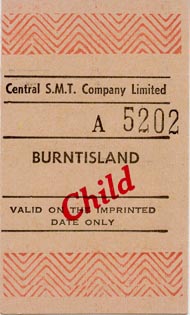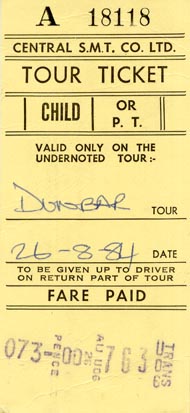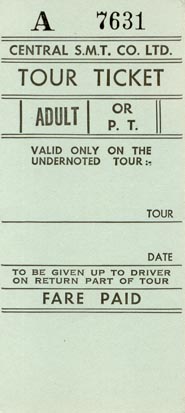Tickets : Multi-journeys & Specials
Weekly Tickets (for on-bus issue)
As described in the Original Setright Inserts section, weekly tickets were introduced in 1941, following the Government-imposed withdrawal of workers' fares. However, the cost of the new weekly tickets was initially based on the old workers' fares. For example, if the worker's fare had been 2d, then the new 12-journey weekly would have cost 12 x 2d = 2/-. Here are two examples of the original weekly tickets, one unused and one used :-
On these tickets, the starting point (11, Clydebank) is shown on the machine imprint, while the destination stage (4, Partick) is punched on the left side of the ticket. The other side is punched to mark off the actual journeys made. Initially, weekly tickets sold on the bus were restricted to 1/-, 1/6 and 2/- values and were only available on Mondays and Tuesdays. Beyond that, the alternative was to buy one from a ticket agent - see below.
Later, the weekly ticket evolved into a variety of types, giving considerable flexibility. The idea of punching the destination stage was retained for a while but then dropped so that, in theory at least, the passenger could have taken some of the journeys on a different route either from or to the starting point of the ticket. Here are some examples :-
Later still, Central changed over to a full-width slot on its Setright Speed machines. This resulted in a wider style of ticket that was capable of holding the entire machine imprint. Note that the idea of punching the destination stage has been resurrected, but it has not actually been used in practice :-
Weekly Tickets (for issue by agents)
In the early days, weekly tickets sold by agents looked quite different from those sold by bus conductors. The agency versions fall into two distinct types. First, here are some examples of limited journey tickets :-
Next, here are a couple of examples of weekly passes for unlimited travel on the specified route during the period of validity :-
Along very similar lines to the above, here is an example of a monthly ticket :-
Schools
Different styles of tickets have been issued over the years to allow children making regular journeys to and from school to have discounted travel. Without much in the way of further comment, here is a journey through Central SMT school tickets down the years.
Here's a bit of an oddity for the special students' service to Paisley College, well outside Central territory. If some of the above have a home-made feel about them, what about this?
Interlink
Interlink was the name given to a number of specific Rail / Bus through ticketing initiatives sponsored by Greater Glasgow (later Strathclyde) PTE in the 1970s. Initially, insert tickets were used and were validated in the wide slots of Central's Setright Speed machines so that the full machine imprint was captured :-
Later, normal paper speed tickets were issued and stuck down inside a laminated card :-
Tours
Although never a key part of its business, Central did operate a number of day and half-day excursions (although it tended to call them tours) from its heartland. Special insert tickets were issued for these. Astonishingly, these were initially tailored for each destination, before the idea of a generic ticket came along! These examples are all designed for the wide slots fitted to Central's Setrights after decimalisation. The more modern generic tickets have a home-made feel about them.
Easi-Kards & Zonals
In Central Scottish days (i.e. 1985-89), the idea of passes giving freedom of travel in a specified area caught on. It started in East Kilbride - hence the initial adoption of the Easi-Kard name. (There was something not quite right about the subsequent Airdrie & Coatbridge Easi-Kard!) The common feature of all these tickets is that they are cards with an attaching piece of Blue Peter-style sticky-backed plastic which, when the backing paper was removed, could be used to seal the ticket. It was a flexible design : the card itself could be completed by hand, or machine-imprinted, or a paper ticket could be inserted between the card and the plastic laminate seal.







